The 2019 Honda Insight Is The Anti-Prius
The 2019 Honda Insight looks inoffensively normal, and in hybrid terms that makes it odder than most. At a time when you can typically spot a hybrid from a half-mile across the parking lot, Honda's decision to bypass the aero-prescribed blob and make a regular sedan seems almost lazy at first glance.
Peer a little deeper, though, and you can see Honda looking ahead to a time when electrification is a given. We're at an inflection point in car technology, as the behemoth that is the auto industry readies itself for a second age in propulsion. Gas and diesel aren't going anywhere for a while still, no, but they're increasingly going to share space under the hood with more modern alternatives.
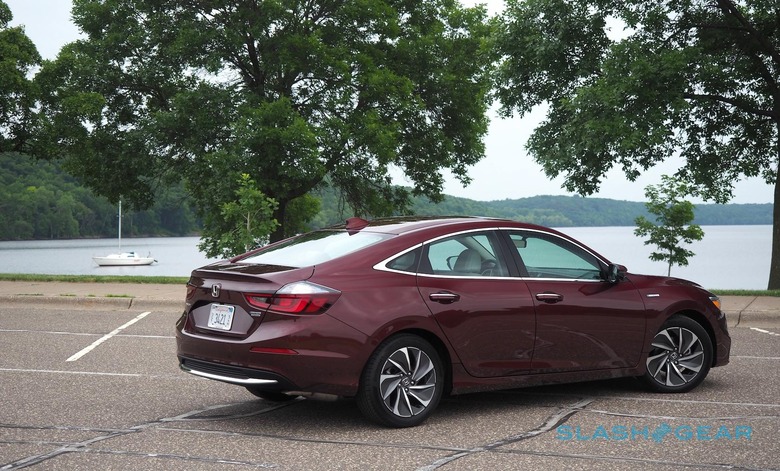
Beyond the early adopter
Hybrid cars have been on sale in America since late 1999, though getting on for two decades later and there's still a fairly common design language. Smooth-bodied wedges that cut through wind tunnels with low drag coefficients may have been popularized by the Prius, but the rest of the industry hardly strayed too far from that blueprint. As a result, alongside the financial premium that buying an electrified car typically entails, there's also a perception premium that drivers need to buy into.
It's only in the last couple of years that hybrids and Els have dared stray from that earnest formula. Whether you credit Elon Musk and the Tesla Model S – or maybe the original Tesla Roadster – for playing a significant part in that, or one of the few other options that doesn't resemble an illustration from a Richard Scarry book, sleek design typically hasn't gone hand in hand with anything but the most expensive, or exotic of electrified cars. It's taken until this point for the mainstream to catch up.
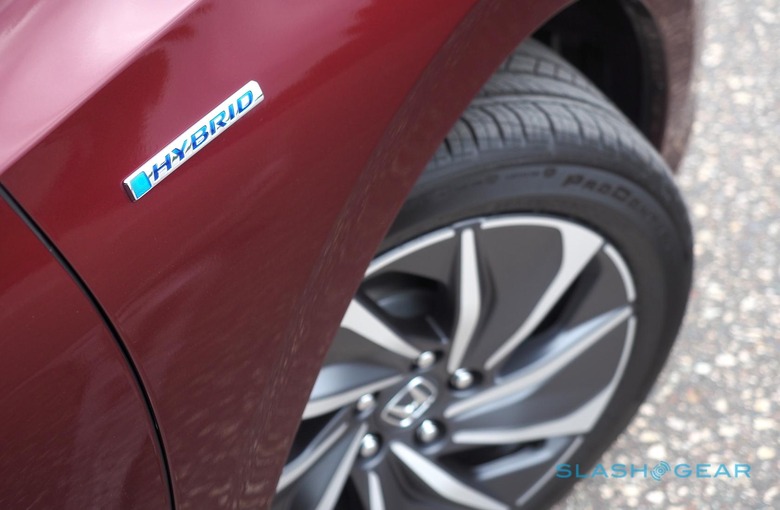
The New Normal
The Insight itself is a better microcosm example of that journey than most. The first-generation Insight, back in 1999, was America's first hybrid. It did 70 mpg, but arguably more shocking at the time was its space-pod looks. The design may not have been met with universal acclaim – and it still isn't, frankly – but it was distinctive as a means to an end: it heralded the beginning of a new age.
Fast forward to the second-generation Insight, in 2008, and things changed significantly. Seen by many as a reaction to the Toyota Prius, the new Insight proved markedly similar in styling to its fellow Japanese hybrid hatchback. With that came more doors and more practicality, but one thing was still certain: it may have looked like the Prius, but hybrids still resembled little else on the road.
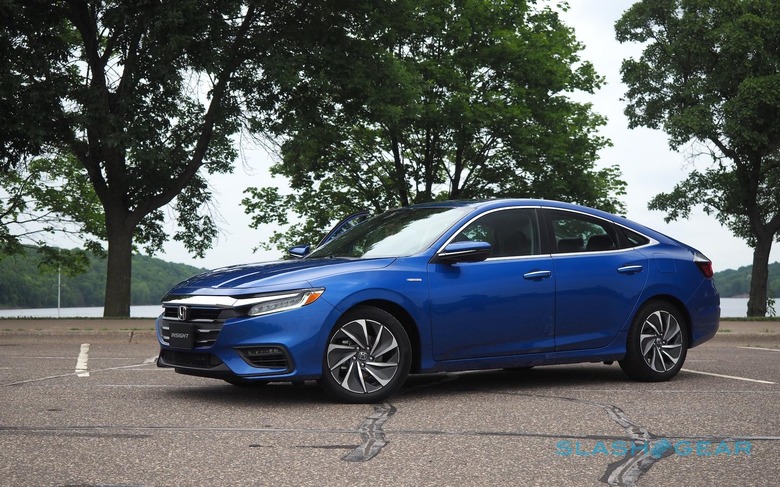
The same can't be said for the 2019 Insight. Honda's newest hybrid is a mini-me of the Accord. A three-box sedan that, though bearing all the hallmarks of modern car design like an expansive grille and sharp crease lines, doesn't draw attention to its electrification. While it may wear its hybrid status on its sleeve – well, on its front fender, anyway – the rest of the third-generation Insight is far more mainstream.
It holds true when you're inside as well. Unlike many other electrified cars in its class, the Insight's dashboard isn't a riot of oversized displays or flashing power meters. The infotainment system doesn't overload you with graphics of where the power is coming from and where it's going: you can see that, if you really want to, but there's a sense that the car would really rather you just plug in your phone and look at CarPlay or Android Auto instead. Honda has hidden the batteries under the rear seats, too, so you don't even have to contend with them taking up trunk space.
What hybrid?
That sense of familiarity extends to the driving experience, too. Behind the wheel of the new Insight, I couldn't escape the feeling that Honda had done everything it possibly could not to scare potential buyers off at the test drive stage. Much of what we've come to associate with the electrified experience is unexpectedly absent.
One of the distinguishing parts of the EV driving style is the instant torque. No waiting for a traditional engine to get up to speed; no sluggish transmission to deal with. Just instantaneous power to the wheels, as soon as you dab the accelerator.
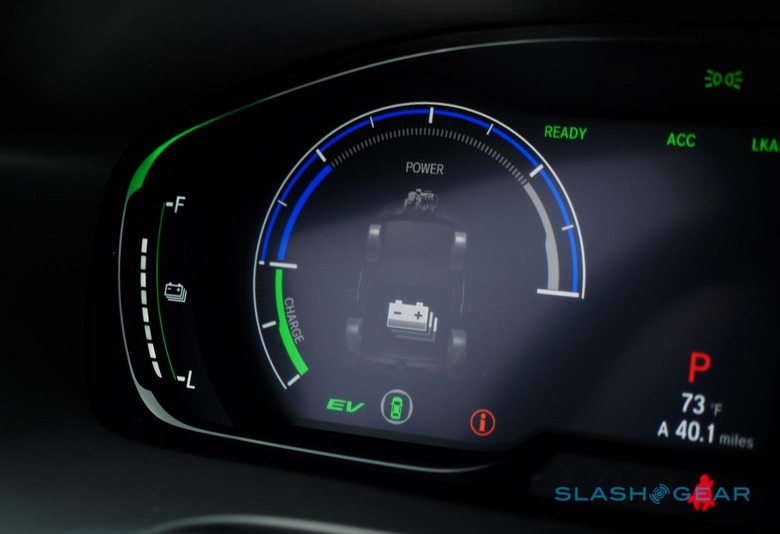
The 2019 Insight isn't slow, or underpowered. Its 151 horsepower and 197 lb-ft of torque are just dandy for the segment; Honda doesn't like to talk about 0-60 times, but figure on around eight seconds. What stands out is the way it delivers that power.
A Prius could well be described as "peppy": each nudge of your right foot sends a squirt of power from the electric motors, and the car whooshes forward. You might not actually be going that fast – and you certainly run out of that "whoosh" fairly quickly – but it feels eager in a distinctly electric way.
The Honda, in contrast feels... well, like a small gas-powered sedan. It's a much more familiar (and presumably, if you're considering trading in your existing gasoline car, less of a culture shock) if you're new to electrification, as Honda expects most Insight buyers will be. The effect isn't entirely seamless – the way the Insight uses the gas engine as a generator most of the time, disconnected from the wheels, means the engine speed you hear doesn't always tally with your actual pace, which takes a little getting used to – but if Honda's intention was to not scare its mainstream buyers with something new and unusual, I think it succeeds.
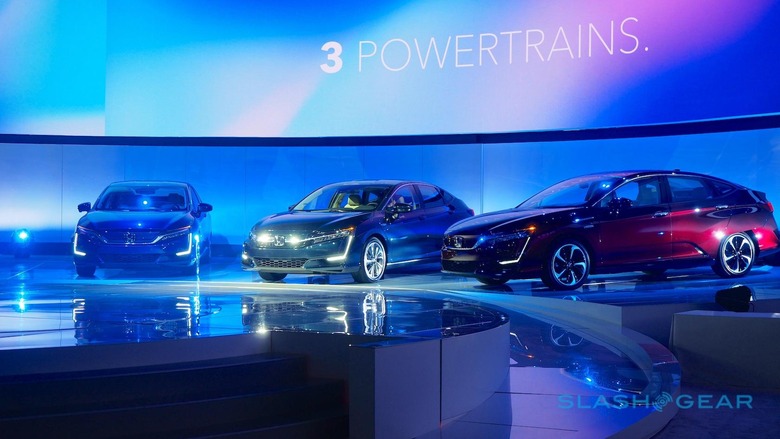
You get electrified, and you get electrified... Everyone gets electrified
If you want to understand Honda's approach with the Insight, you first have to understand its electrification strategy overall. Gone are the days where a car company could have one, maybe two hybrids in its line-up, and call it a day. Electrified cars – whether mild-hybrid, hybrid, plug-in hybrid, entirely battery-electric, or something more unusual like a hydrogen fuel-cell – are increasingly going to crop up across the range.
In Honda's case, the goal is two-thirds of its global auto sales, both cars and light trucks, being electrified in some form by 2030. By that point – indeed, before that point – it means that cars like the Insight will go from being the oddballs in the dealership to the status quo. A pure gas or diesel Honda will be the exception, not the rule.
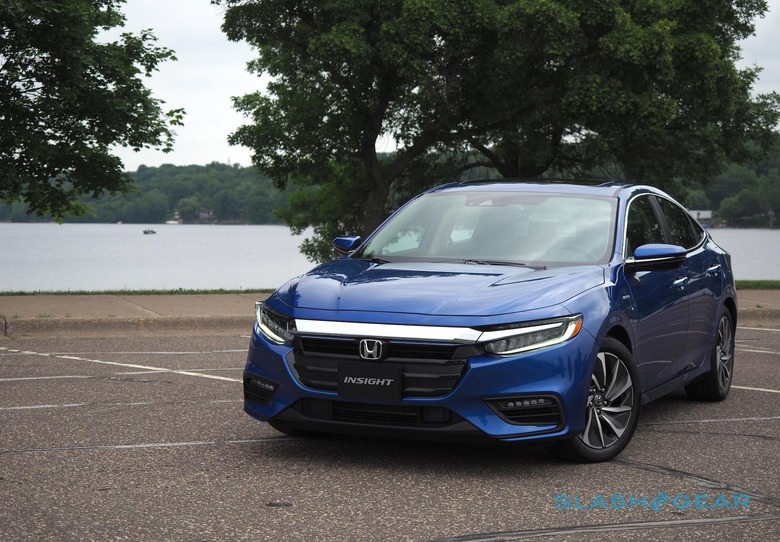
I suspect there'll still be more unusual designs among those growing ranges. There's the aerodynamic advantages to consider, for a start, along with the fact that some EV buyers really do want a vehicle that telegraphs its eco-status from across the parking lot. You can see that already with Honda's own Clarity series, targeting those more eager to embrace green motoring.
In contrast, the 2019 Insight is intended as a hybrid gateway drug. A car you can drive pretty much as you would any gas-engined sedan, and simply enjoy greater economy along the way. Honda's vision is that it'll act as a stepping stone to more aggressive electrification in the years to come, and with the automaker not alone in making aggressive predictions about its EV ambitions, I suspect it's a shift in strategy we'll see echoed across the industry.
